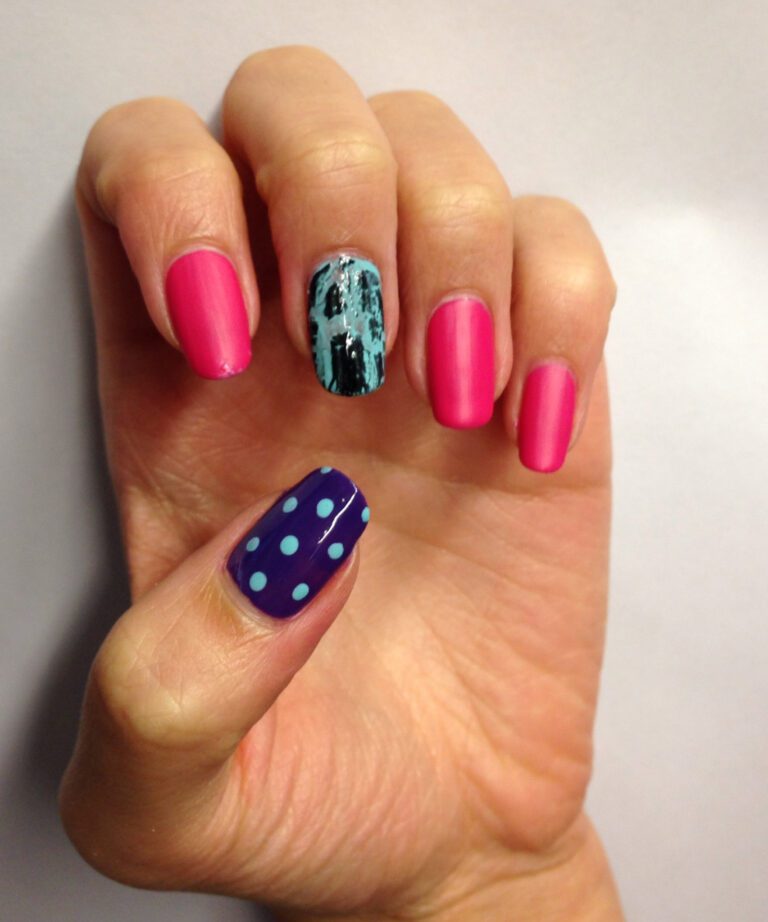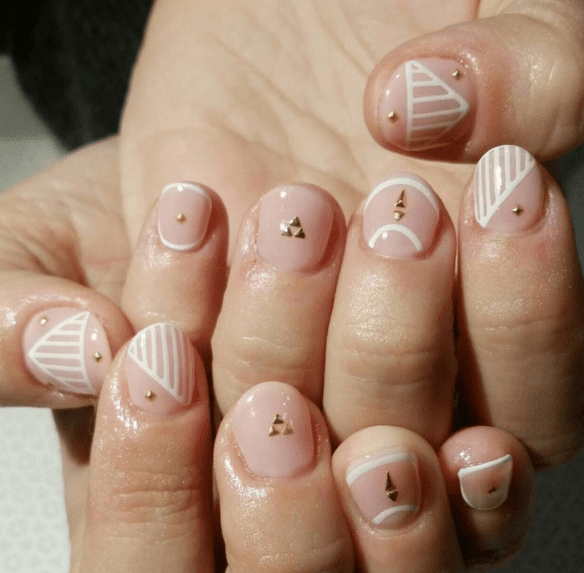“Spot On: White Spots and Nails Explored”
White spots on nails, also known as leukonychia, can be a common concern for many individuals. These spots can appear on the fingernails or toenails and are often a source of curiosity and worry. In this article, we will explore the causes of white spots, the role of nutrition in nail health, common myths about white spots on nails, and preventive measures to maintain healthy nails.
Key Takeaways
- White spots on nails are usually harmless and may be caused by minor injuries or trauma.
- Nutrition plays a significant role in maintaining healthy nails, and deficiencies in certain nutrients can lead to nail abnormalities.
- Contrary to popular belief, white spots on nails are not always a sign of a calcium deficiency.
- Maintaining good nail hygiene and protecting nails from damage are essential preventive measures for white spots on nails.
- Consulting a healthcare professional is recommended if white spots on nails persist or are accompanied by other symptoms.
Understanding White Spots on Nails

Causes of White Spots
White spots on nails, medically known as leukonychia, can often be a source of curiosity and sometimes concern. These spots typically appear as small, non-uniform white marks on the nail and can have several causes. One of the most common reasons is minor trauma to the nail, such as when you accidentally hit your finger against a surface. This type of leukonychia is usually harmless and will grow out with the nail over time.
Another cause of white spots is an allergic reaction to nail polish or hardeners. Infections, particularly fungal infections like onychomycosis, can also lead to white discolorations. Less commonly, white spots may indicate a systemic issue or a deficiency in essential nutrients such as zinc or calcium.
- It’s important to note that while white spots are usually benign, persistent or recurring spots should be evaluated by a healthcare professional to rule out underlying health concerns. *
Medical Implications
While often benign, white spots on nails can sometimes signal underlying medical conditions. It’s important to differentiate between isolated incidents of discoloration and persistent, widespread nail changes. In some cases, white spots are indicative of a fungal infection, such as onychomycosis, or can be a sign of an allergic reaction to nail polish or hardeners. Less commonly, they may point to more serious conditions like anemia or liver disease.
When assessing the medical implications of white spots on nails, it’s crucial to consider the duration and pattern of the spots. A single spot that disappears over time is typically not a cause for concern. However, if spots persist or multiply, it may be advisable to consult a healthcare professional. Here’s a simple checklist to help determine when to seek medical advice:
- Persistent spots that do not fade over time
- Multiplying spots or spots that spread to other nails
- Accompanying symptoms such as nail thickening or discoloration
- Previous history of nail or skin infections
Tip: Keeping a record of nail changes can be helpful during a medical consultation to track the progression and aid in diagnosis.
The Role of Nutrition in Nail Health

Essential Nutrients for Healthy Nails
Nails, much like the rest of our body, require a variety of nutrients to maintain their strength and health. Biotin, also known as vitamin B7, is often touted for its role in supporting nail growth and preventing brittleness. A deficiency in biotin can lead to weak nails prone to splitting and breaking.
Other key vitamins include A, C, D, and E, which contribute to nail health by supporting the body’s keratin infrastructure—the protein that makes up the majority of the nail. Minerals such as zinc and selenium are also crucial; they play a role in the growth and repair of nail tissues.
Tip: Consistently including these nutrients in your diet can help you maintain strong and healthy nails. Supplements can be beneficial, but it’s best to seek nutrients from whole food sources whenever possible.
Omega-3 fatty acids, found in fish and flaxseeds, are known for their anti-inflammatory properties and can help improve the appearance of nails by reducing brittleness and promoting moisture retention.
Impact of Diet on Nail Appearance
The appearance of our nails can be significantly influenced by our dietary choices. A balanced diet rich in vitamins and minerals is crucial for maintaining the structural integrity and luster of nails. Deficiencies in certain nutrients can lead to discoloration, brittleness, and the formation of white spots.
Zinc, for example, plays a vital role in nail growth and repair. Insufficient zinc levels can result in white spots on nails, signaling a need for dietary adjustment or supplementation. Similarly, a lack of iron can cause nails to become thin and concave, with white spots being a common symptom.
Tip: To promote nail health, include a variety of nutrient-dense foods in your diet, such as leafy greens, nuts, seeds, and lean proteins.
It’s important to note that while diet can impact nail health, white spots are often harmless and may resolve on their own without specific treatment. However, persistent or numerous white spots should be evaluated by a healthcare professional to rule out underlying health issues.
Common Myths About White Spots on Nails

Debunking Misconceptions
One of the most persistent myths surrounding white spots on nails is the belief that they are a sign of calcium deficiency. This misconception has been widely circulated, but in reality, these spots are more commonly the result of minor trauma to the nail bed, such as knocks or bumps that may not even be remembered.
Another common fallacy is the idea that these white marks can indicate a serious underlying health condition. While it’s true that nail changes can reflect overall health, isolated white spots are typically harmless and often resolve on their own without the need for medical intervention.
Tip: If you notice a sudden or significant change in your nail appearance, it’s always best to consult with a healthcare professional to rule out any potential health issues.
It’s important to approach nail care with informed choices, and understanding the true causes behind white spots can help in maintaining healthy nails. Let’s dispel these myths and focus on the facts for better nail care practices.
Facts vs. Fiction
In the realm of nail health, white spots on nails have been subject to various myths and misconceptions. One prevalent fiction is the belief that these spots are always indicative of a calcium or zinc deficiency. While it’s true that nutrients play a crucial role in nail health, not all white spots stem from nutritional shortages. In fact, they are often the result of minor trauma to the nail bed, which may not be immediately noticeable.
Another common myth is the assumption that white spots are a sign of a fungal infection. Although fungal infections can cause nail discoloration, they typically present with additional symptoms such as thickening of the nail, brittleness, and sometimes pain. It’s essential to distinguish between these conditions, as their treatments differ significantly.
Tip: If you’re unsure about the cause of white spots on your nails, consult a healthcare professional for an accurate diagnosis rather than self-diagnosing based on myths.
To further clarify the distinction between fact and fiction, consider the following points:
- White spots are not always a sign of a nutrient deficiency.
- Minor trauma to the nail is a common cause of white spots.
- Not all nail discolorations are fungal infections.
- Professional diagnosis is key to appropriate treatment.
Preventive Measures for White Spots on Nails

Maintaining Nail Hygiene
Maintaining nail hygiene is crucial for preventing white spots on nails. Regularly trimming nails straight across and using a moisturizer can help keep nails healthy and strong. Additionally, avoiding prolonged exposure to water and keeping nails clean and dry are important preventive measures. Implementing these practices can significantly reduce the likelihood of developing white spots on nails. Remember, healthy nails start with good nail hygiene.
Protecting Nails from Damage
To shield your nails from damage, it’s essential to adopt a proactive approach. Regular maintenance and care can go a long way in preserving the integrity of your nails. Here are some practical tips:
- Avoid harsh chemicals: Exposure to strong detergents and cleaning agents can weaken nails. Use gloves when cleaning or handling chemicals.
- Maintain a safe nail care routine: Overzealous nail care, such as aggressive filing or cutting cuticles, can cause harm. Be gentle and use the right tools.
- Choose the right products: Not all nail products are created equal. Opt for high-quality polishes and removers that are less likely to cause damage.
Tip: Always give your nails a break between manicures to allow them to recover and breathe.
Remember, prevention is better than cure. By taking these steps, you can help protect your nails from unnecessary stress and keep them looking healthy and strong.
White spots on nails, also known as leukonychia, can be caused by various factors such as trauma, mineral deficiencies, or fungal infections. While they are usually harmless, they can be unsightly and may cause concern. Preventive measures for white spots on nails include maintaining a balanced diet, avoiding trauma to the nails, and practicing good nail hygiene. If you notice persistent white spots on your nails, it’s important to consult a healthcare professional for proper diagnosis and treatment. For more tips on nail care and maintenance, visit NAILinspire.com – The Ultimate Online Nail Art Design Library.
Frequently Asked Questions
What causes white spots on nails?
White spots on nails can be caused by trauma, fungal infections, or nutritional deficiencies.
Are white spots on nails a sign of a health problem?
In some cases, white spots on nails may indicate an underlying health issue, such as zinc deficiency or psoriasis.
Can diet affect the appearance of nails?
Yes, a balanced diet rich in essential nutrients can contribute to healthy nail appearance and prevent white spots.
Do white spots on nails indicate a calcium deficiency?
Contrary to popular belief, white spots on nails are not necessarily a sign of calcium deficiency.
How can I protect my nails from developing white spots?
Maintaining good nail hygiene, avoiding trauma, and protecting nails from harsh chemicals can help prevent white spots.
Are white spots on nails contagious?
No, white spots on nails are not contagious and cannot be passed from one person to another.






